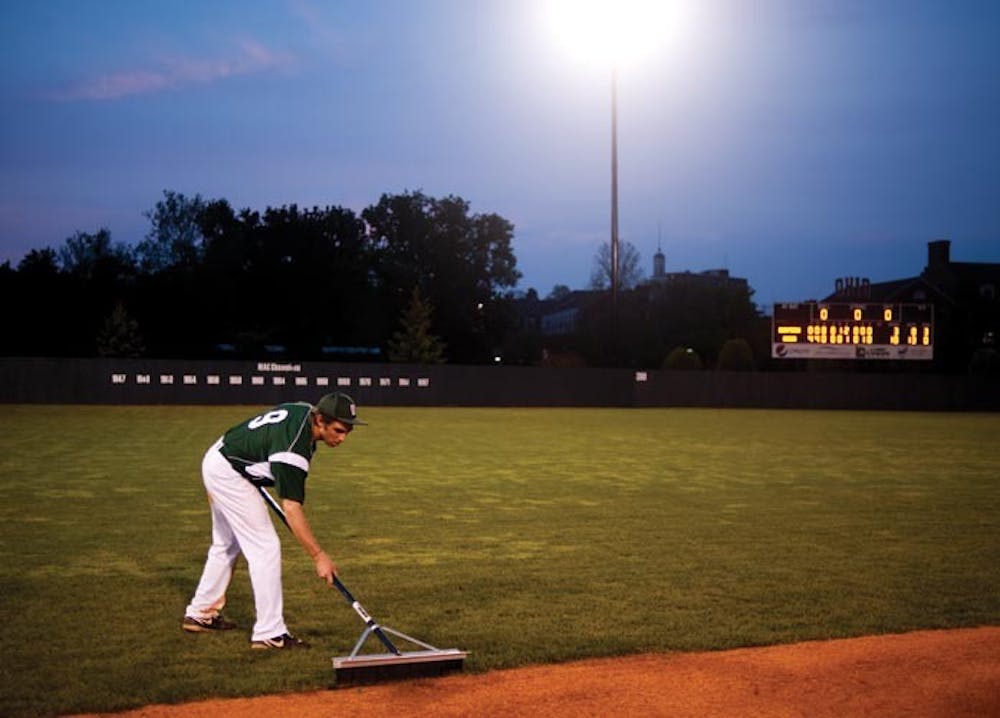From the music and antics of the Ohio University Marching 110 to the winning ways of the Bobcat football and men’s basketball teams, there are plenty of reasons to attend a game at Peden Stadium or The Convo this year. But those events require a hefty support staff to make each contest possible.
Steve Mack, OU’s director of Facilities Management, oversees much of the work done to maintain all of the athletic fields and stadiums across campus. He says that most of the his staff’s time is spent maintaining facilities that have fields with natural grass, such as Bob Wren Stadium and Chessa Field.
“The two big obvious things are that you have to mow the grass to the base and you have to water it,” Mack said.
But the work is far from over at that point. Caring for an athletic field is a year-round task that does not end when the season does. In the offseason, grass is reseeded, aerated and treated with chemicals and pesticides to ensure its health and long-term sustainability.
The wear and tear brought on by sports such as baseball and soccer takes its toll on the grass, and specific parts have to be replaced.
“Sometimes we have to cut out grass and replace it with fresh sod, and sometimes we over-seed to encourage grass to grow during the season,” Mack said. “For baseball (the damage) is on the base paths, and for soccer it’s in and around the goal mounts. There’s not a lot, but it does add up.”
On game day, the grounds crew has to make sure the grass fields are lined and may often cut the grass before the game to make sure it is up to playing height.
A facility like Peden Stadium, which has artificial turf, requires much less effort.
The tasks at those facilities include sweeping the field, making sure there are no holes in the turf and removing crabgrass from in and around the field.
The groundskeepers’ work does not stop at the athletic fields, explains Jason Farmer, assistant athletics director for Facilities and Operations.
“90 percent of what the athletic grounds shop does is related to athletic fields,” Farmer said. “But there is some non-athletic turf around this area as well as “Punchcard Park” across from the Convo that they take care of.”
“Punchcard Park” is the informal name for Bicentennial Park, the area next to Walter Hall with raised and recessed concrete rectangles. The area used to be the site of Ohio’s baseball diamond before Bob Wren Stadium was built.
Part of the gameday preparations is the people who help to fill the seats: the Ticket Operations staff. Director of Ticket Operations Eric McLellan says that his workers are the first line of customer service to fans, alumni and former players who want to inquire about the six ticketed sports — football, men’s and women’s basketball, baseball, volleyball and softball.
“Right now in Ticket Operations, we’re filling orders for season tickets,” McLellan said. “And it seems every single year we implement a little bit of an upgrade to the fan experience with at least one of our sports.”
At Peden Stadium, workers are adding seatbacks in sections 104 and 105 for customers who donate an extra $50. McLellan said that it’s those types of donations that finance improvements for the stadium.
Game day at Peden Stadium is a big production for those involved in the ticket department. McLellan said that about 20 Ticket Operations employees run several stations throughout the stadium. The workers range from student volunteers to older members of the Athens community.
“When it comes to a smaller event, we require one or two people working the ticket gates,” McLellan said. “But when you’re working with a crowd that’s 20,000 plus, you have to break it up and take a couple days to prepare.”
ch203310@ohiou.edu






